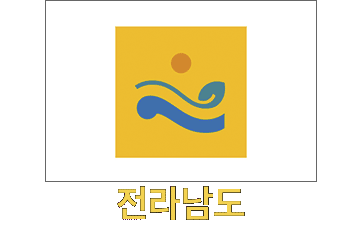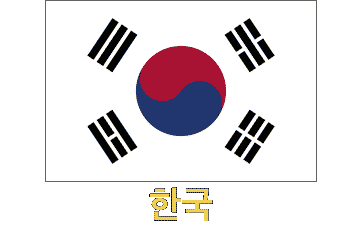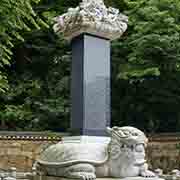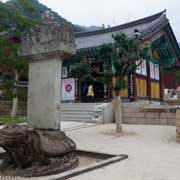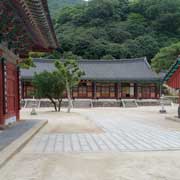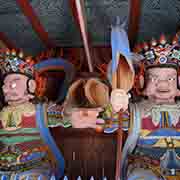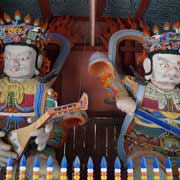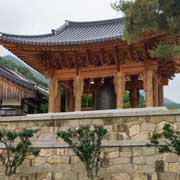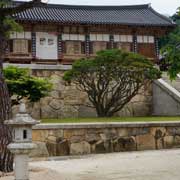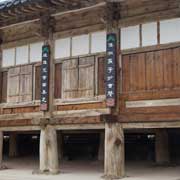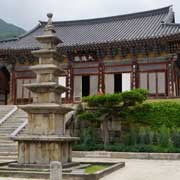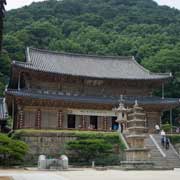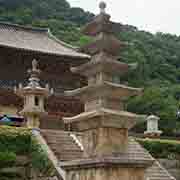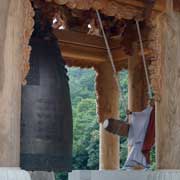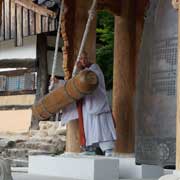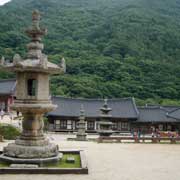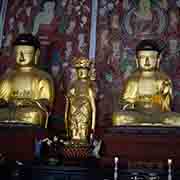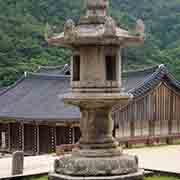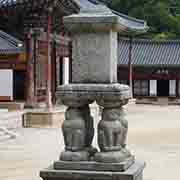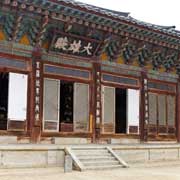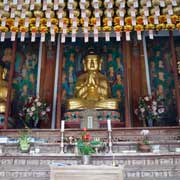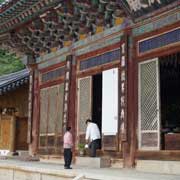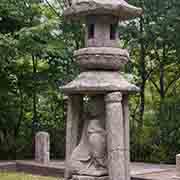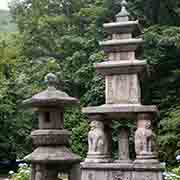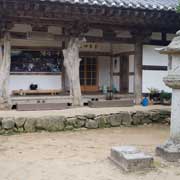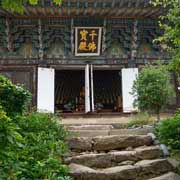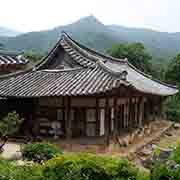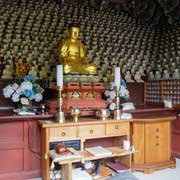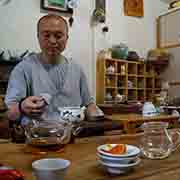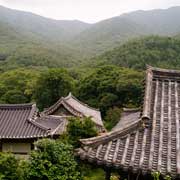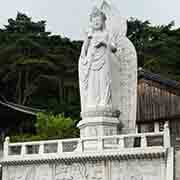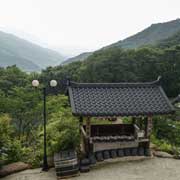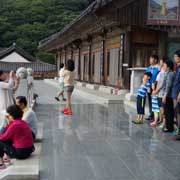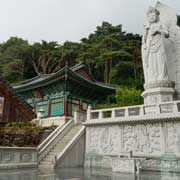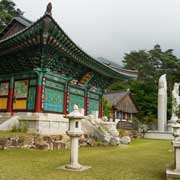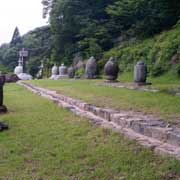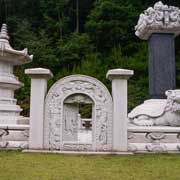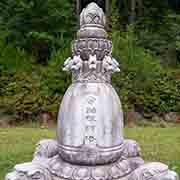Photos of Hwaeomsa Temple, South Jeolla Province, Korea
Hwaeomsa Temple, South Jeolla Province
The Hwaeomsa (“Flower Garland Temple”) in the southwest corner of Jirisan National Park in Jeollanam-do (South Jeolla Province) is the head temple of the Jogye Order of Korean Buddhism, located on the slopes of the mountain Jirisan. It was founded in 544 CE during the time of the Baekje Kingdom by the Indian monk Yeon-gi, who brought the Avatamsaka (Garland) sutra and his mother, a Buddhist nun, from India. The temple was burnt down during the Japanese invasions of Korea in 1592 but was rebuilt during the Joseon Era.
you may then send it as a postcard if you wish.
The two principal worship halls are Daeungjeon Hall, the main hall with the stone five-story Eastern Pagoda in front of it and Gakhwangjeon Hall, with the stone five-story Western Pagoda in front. Daeungjeon Hall was constructed in 1636 by the eminent monk Byeogam Gakseong, marking the first stage of Hwaeomsa’s restoration. It had been burned down in the Imjin War, the Japanese invasion of the 1590s. It is the oldest wooden structure at the temple. The Bojeru Pavilion of Hwaeomsa, built in 1636 for monastic and lay gatherings, is unusual in that it has supporting pillars of natural wood, unpainted and without decoration.
Climbing 108 stairs from the main plaza of Hwaeomsa temple, one reaches the area known as “the place of filial piety”. On a grassy space is a stone lantern. Inside it is a statue of Hwaeomsa’s founder, the Indian monk Yeon-gi, offering a cup of tea to his mother, a Buddhist nun, standing under a three-story Pagoda with four supporting lions. The lion’s faces each have different expressions, reflecting the joys and sorrows of life.
The monk’s quarters at Hwaeomsa are at Gucheungam (“Nine Level”) Hermitage, which includes a tea plantation; the monks grow their tea plants on the slopes overlooking the monastery. A little further is Yeongiam Hermitage, the site where Hwaeomsa Temple was founded by the Indian monk Yeon-gi under the reign of King Seong during the Baekje Dynasty. It was completely burnt down during the Japanese Invasion of Korea in 1592 but restored in 1989 by a Buddhist monk named Jongwon. It has a 13-metre high statue of Manjusri, the Bodhisattva of Great Wisdom, the chief of the bodhisattvas; it was commissioned by a Buddhist monk named Manhae in 2008 and is the largest one of its kind in Korea.
